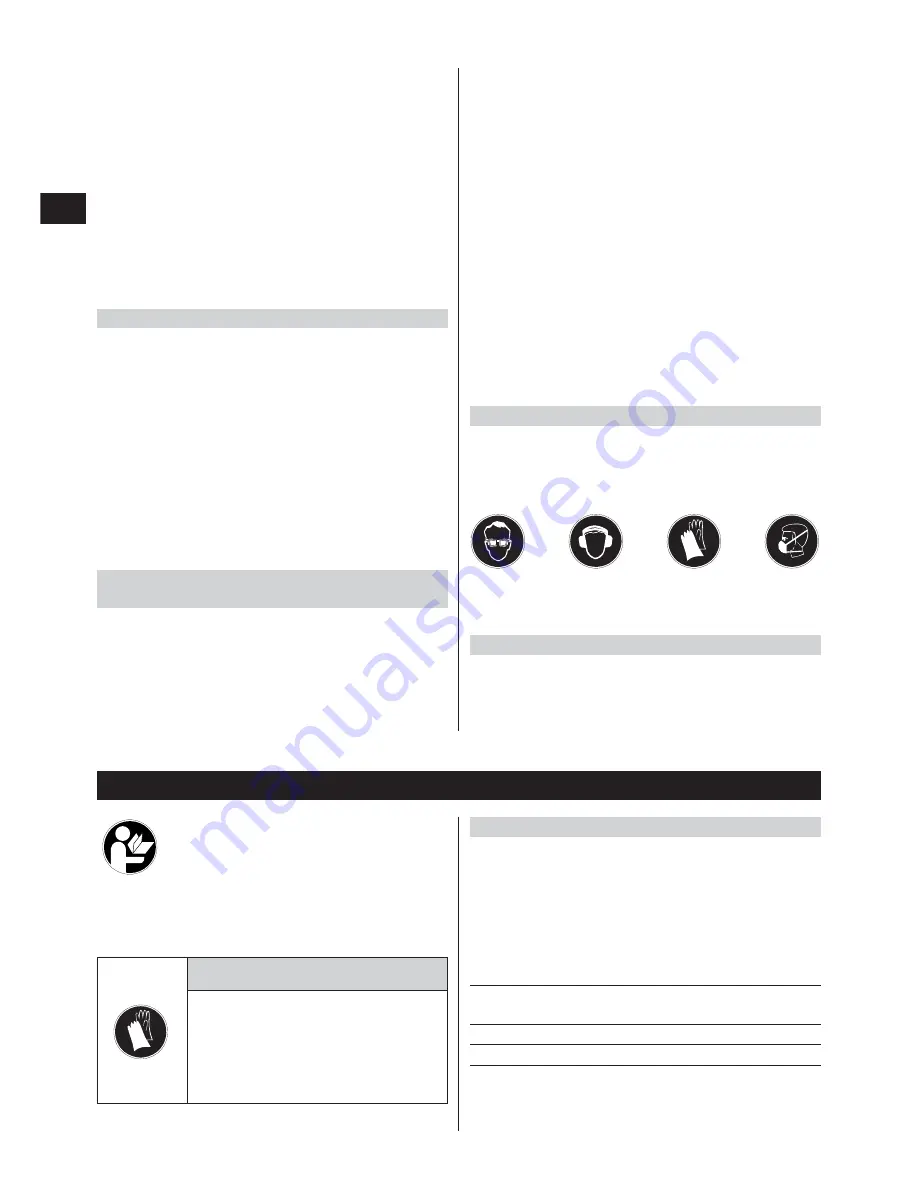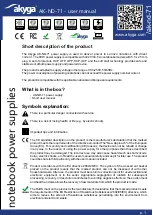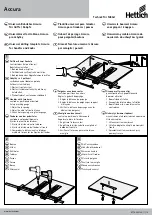
18
en
6. Before use
-NOTE-
The electric supply voltage must comply with the infor-
mation on the type plate.
-CAUTION-
●
The cutting edges of the saw blade
are sharp.
●
The cutting edges may present a risk
of injury.
●
Wear protective gloves.
6.1 Extension cords
If extension cords are used: Use only extension cords
of a type approved for the intended purpose and of ade-
quate cross section. Failure to observe this point may
result in reduced performance and may cause the cord
to overheat. Replace damaged extension cords. Use only
correspondingly marked and approved extension cords
for working outdoors. Recommended minimum cross
sections and max. cord lengths:
Mains voltage
Conductor cross section
1.5 mm
2
2.5 mm
2
110 V
20 m
30 m
230 V
50 m
100 m
Extension cords for outdoor use
For outdoor work use only extension cords approved and
correspondingly marked as suitable for outdoor use.
materials.
Dust (especially dust from conductive
materials) or dampness adhering to the surface of
the tool may, under unfavorable conditions, present
a risk of electric shock.
d)
When working outdoors with an electric tool it must
be ensured that the tool is connected to the elec-
tric supply by way of a ground fault circuit breaker
(RCD) with a maximum rating of 30 mA (max. 30
mA tripping current).
Use of a ground fault circuit
breaker reduces the risk of electric shock.
e)
It is recommended that a ground fault circuit break-
er (RCD) with a maximum rating of 30 mA (max.
30 mA tripping current) is always used.
5.2.4 Power tool use and care
a)
Secure the workpiece. Use clamps or a vice to hold
the workpiece in place.
The workpiece is thus held
more securely than by hand and both hands remain
free to operate the tool.
b)
Ensure that the insert tools used are equipped with
the appropriate connection end system and that
they are properly fitted and secured in the chuck
.
c)
In the event of a power faillure, switch the tool off
and unplug the supply cord.
This prevents inadver-
tent starting when the power returns.
d)
Avoid using extension cords with multiple sockets
and the simultaneous use of several electric tools
connected to one extension cord.
5.2.5 Special safety precautions for
reciprocating saws
a)
When cutting, always guide the tool away from the
body.
b)
Never place your hands in front of or on the saw
blade.
c)
Do not cut unknown base materials.
The blade may
cause the tool to kick back if it strikes a hidden object.
d)
Switch the tool off before transporting it.
e)
The cutting produced when sawing, especially metal
cuttings, may be hot. Wear suitable protective
clothing.
f)
The safety guard for the saw blade must always be
fitted in order to prevent inadvertent contact with
the saw blade or the moving parts above the saw
blade.
g)
Before beginning work, find out the hazard class of
the dust produced by the work.
Use only an indus-
trial vacuum cleaner with an officially approved pro-
tection classification in compliance with your local
dust control regulations for work with the tool.
h)
The dust removal hood should not be disassembled.
i)
The blade breaking through the material being cut
presents a risk of injury.
Take the appropriate safety
measures to secure the rear of the workpiece.
j)
Keep the hands away from the area beneath the
workpiece while sawing.
5.2.6 Personal protective equipment
The user and any other persons in the vicinity must wear
suitable eye protection, ear protection and protective
gloves. They must also wear respiratory protection if no
dust removal system is used
Wear
ear protection
Wear
protective gloves
Wear
breathing
protection
Wear
eye protection
5.2.7 Protective devices
Never operate the tool without the applicable protective
devices (dust hood).
Printed: 07.07.2013 | Doc-Nr: PUB / 5138188 / 000 / 00




































